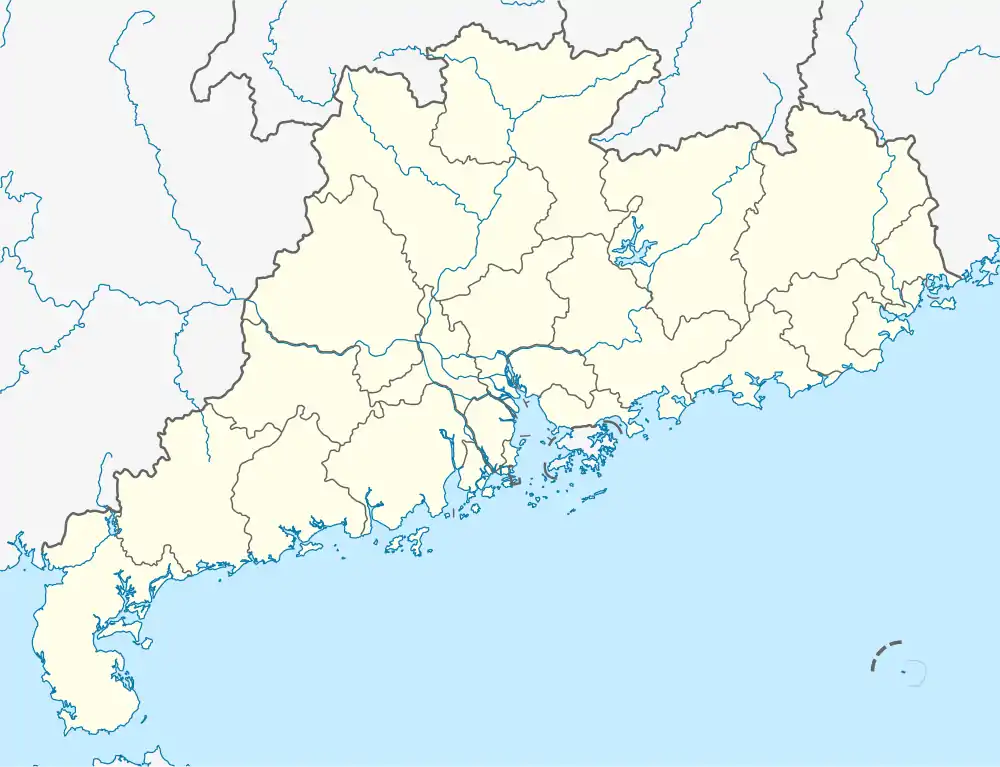Guiyu, Guangdong
Guiyu (Chinese: 贵屿; pinyin: Guìyǔ) is a town created from an agglomerate of four adjoined villages totalling 150,000 people in the Chaoyang district of Guangdong province in China.[1] Situated on the South China Sea coast, Guiyu is perhaps best known in the global environmentalist community for its reception of e-waste. In fact, the town also holds the record for being the largest e-waste site of the world, as of 2013.[2]
Guiyu
| |
|---|---|
 Guiyu | |
| Coordinates: 23°19′11.81″N 116°20′59.62″E | |
| Country | |
| Province | Guangdong |
| Prefecture | Shantou |
| Time zone | UTC+8 (China Standard Time) |
Electronic waste
Guiyu was once the largest e-waste site on earth,[3] Regions like Guiyu rely on primitive electronics recycling as an economic staple despite the adverse effects electronic waste has on health and the environment.[4] The burning off of plastics in the town has resulted in 80% of its children having dangerous levels of lead in their blood.[5]
A recent study of the area evaluated the extent of heavy metal contamination released from the site. Using dust samples, scientists analysed mean heavy metal concentrations in a Guiyu workshop and found that lead and copper were 371 and 115 times higher, respectively, compared to areas located 30 kilometres away.[6] The same study revealed that sediment from the nearby Lianjiang River was found to be contaminated by polychlorinated biphenyls at a level three times greater than the amount prescribed in the guideline.
Since 2013, local authorities had moved most e-waste workshops into an experimental industrial ecology park called the National Circular Economy Pilot Industry Park. There, toxic waste by products can be treated and recycled with better efficiency. Air and water quality subsequently improved in the town, though many were still left contaminated from the remnants of e-waste processing and have not been cleaned up.[7]
In 2005 the Italian band Planet Funk shot and published the music video for their song "Stop Me" in which Guiyu and its e-waste environment are portrayed.
See also
- Agbogbloshie (electronic waste site in Ghana)
- Dali Town, Foshan another E-waste processing town in China.
- Longtang Town, Qingcheng District, Qingyuan another E-waste processing town in China.[8]
References
- "Heavy Metals Concentrations of Surface Dust from e-Waste Recycling and it Human Health Implications in Southeast China" (PDF). Environmental Science & Technology. 5 January 2008. Archived from the original (PDF) on 4 March 2016. Retrieved 27 November 2012.
- Guinness World Records 2013, Page 037. ISBN 9781904994879
- Johnson, Tim (April 9, 2006). "E-waste dump of the world". The Seattle Times. Retrieved 2007-03-09.
- Chung, Chien-min (7 January 2009). "China's Electronic Waste Village". Time. Archived from the original on January 13, 2009. Retrieved November 26, 2012.
- Monbiot, George (September 21, 2009). "From toxic waste to toxic assets, the same people always get dumped on". The Guardian. London. Retrieved May 4, 2010.
- Leung, Anna (March 4, 2008). "Heavy Metals Concentrations of Surface Dust from e-Waste Recycling". Hong Kong. doi:10.1021/es071873x.
- "China's notorious e-waste dumping ground cleaner but poorer". South China Morning Post. Retrieved 2017-09-28.
- "清远千家非法拆解厂 一年拆解百万吨洋垃圾·广东新闻·珠江三角洲·南方新闻网". www.southcn.com. Retrieved 2017-09-28.